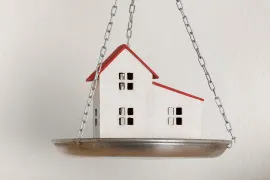Sylvia considers starting CPP benefits this year at age 60 with a 36 per cent cut in the age 65 benefit. “For an age 60 start, she would be accepting 64 per cent of long-term CPP pension income. If she lives to the Statistics Canada average for her age group, 84.9 years, she would be passing up half her lifetime benefits, Moran explains.
Adding up the 36 per cent cut of CPP for a start at 60 and the 42 per cent bonus for delaying to 70, the total, 78 per cent, makes patience worthwhile — if one lives into their late 70s to recoup higher payouts. What goes for CPP applies to OAS, too, Moran notes. Delaying the start of OAS from 65 to 70 boosts benefits by 7.2 per cent per year. That’s 36 per cent for 5 years. For the range from 60, with a 36 per cent discount to 70, the gain is 78 per cent in total. For OAS, which cannot start before 65, there is a boost of 7.2 per cent per year or 36 per cent total for waiting to 70 to start. The longer one lives, the higher the lifetime cost of early start. We assume Sylvia retires at age 60 but wisely defers start of CPP and OAS to 65. That’s a reasonable compromise given the chance of dying before postponed benefits are recovered.ts her own CPP benefit at age 65.
Adding up these income sources, Sylvia would have $53,011 before tax. With TFSA cash flow removed and the balanced taxed at 15 per cent, she would have $45,689 per year or $3,805 per month with TFSA cash flow returned. That is $1,890 per month less than present spending. To cover the cash gap to age 65, Sylvia would eliminate $1,260 RRSP and TFSA savings, $210 pension contributions, perhaps $275 lawn maintenance, and cut entertainment and travel by $145 per month.
Starting at age 65, Sylvia would have $38,189 RRSP/RRIF income, $4,195 TFSA income, and $3,487 from invested cash. That’s a total of $45,871 per year. The survivor benefit would be gone. Sylvia could add CPP at $14,165 per year and OAS at $7,384 per year. That would push pre-tax income to $67,420. After 18 per cent average tax on all but TFSA cash flow, she would have $56,040 to spend each year or $4,670 per month. That’s $1,025 per month less than the current budget. However, with elimination of $1,260 of RRSP and TFSA savings, she would be within budget and have cash to spare.
Investment flows
Sylvia’s tax-free savings account has $84,687. If that sum with no further contributions grows at three per cent per year, it could provide yearly payouts of $4,195 for 30 years starting this year at age 60.
Her RRSPs including her defined contribution pension and a locked-in retirement account add up to $770,977. If that capital grows at three per cent per year after inflation for 30 years, the assets would pay $38,189 per year for 30 years starting this year at age 60.
Sylvia also has $70,400 in cash. If she annuitizes the income and principal at three per cent after inflation for 30 years starting this year, that capital, still growing at three per cent before tax would pay her $3,487 per year to exhaustion of capital.
Before 65, Sylvia will continue to have income from her late spouse’s CPP benefit that works out to $7,140 per year. That income runs until Sylvia starts her own CPP benefit at age 65.
Adding up these income sources, Sylvia would have $53,011 before tax. With TFSA cash flow removed and the balanced taxed at 15 per cent, she would have $45,689 per year or $3,805 per month with TFSA cash flow returned. That is $1,890 per month less than present spending. To cover the cash gap to age 65, Sylvia would eliminate $1,260 RRSP and TFSA savings, $210 pension contributions, perhaps $275 lawn maintenance, and cut entertainment and travel by $145 per month.
Starting at age 65, Sylvia would have $38,189 RRSP/RRIF income, $4,195 TFSA income, and $3,487 from invested cash. That’s a total of $45,871 per year. The survivor benefit would be gone. Sylvia could add CPP at $14,165 per year and OAS at $7,384 per year. That would push pre-tax income to $67,420. After 18 per cent average tax on all but TFSA cash flow, she would have $56,040 to spend each year or $4,670 per month. That’s $1,025 per month less than the current budget. However, with elimination of $1,260 of RRSP and TFSA savings, she would be within budget and have cash to spare.
Backup plan — downsizing
There are ways to avoid cuts in spending. Were Sylvia to downsize her $1.4 million house to something around $800,000 at age 65, then after five per cent cost of primping and selling costs, total $70,000, she would have $1,330,000 less the cost of the new condo, net $530,000. She has targeted age 80 as a time to downsize, but she has no firm plan. If she downsizes at 65, proceeds of sale on a non-annuitized basis with a three per cent return after inflation would be $15,900 straight income or $29,550 on an annuitized basis for 25 years to her age 90, with the annuity calculation including income plus return of capital.
In the straight income scenario should would have total pre-tax income of $83,320 and would still have a large capital cushion to fall back on. If she chooses the annuity route it would boost her income to $96,970 per year. At tax rates of 20 and 23 per cent, respectively, she would be left with either $67,500 or $75,632.
Sylvia is a paradox — a wealthy woman with a modest retirement income. Keeping the $1.4 million house and not taking the income its value could create presents a cash-flow problem. Downsizing to a condo would be a change in way of life. “Our solution provides money to late life with the house and her pets. It’s financial comfort,” Moran says.
Retirement stars: Three *** out of five
Financial Post
( C) 2021 The Financial Post, Used by Permission


































